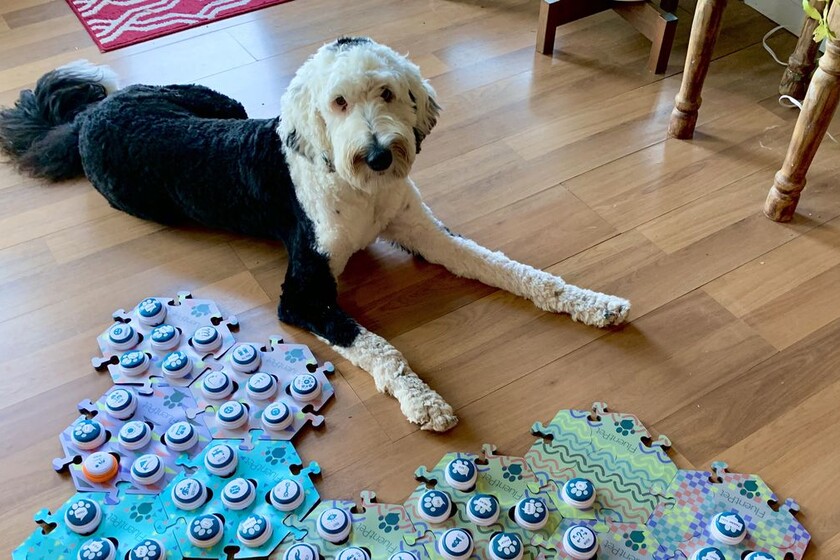Bunny is 20 months old, a talkative carpet with 70 words associated with concepts and six million followers on TikTok who adore her.
This occurs in the two most popular videos of his carousel, quite representative of how Bunny deals with the world in his day to day: “We” + “love” + “you” + “why” + “he left”, says the dog in November 2020. “We love who?” thinks her owner Devine. “Dad?” She deduces. The mental work that the animal has done, according to this woman who claims to be not an expert in canine science at all, is to put together a plural pronoun with an emotional word, a question and a verb in the past tense. “Where has dad gone? He’s gone for food and will be back soon! ”Devine responds to Bunny. Same answer: “dad” + “bye”.
Months later, Bunny starts asking her caregiver tough questions. “Sleep” + “why”. What brings us to sleep? She had to explain, confused by the limited language available on the carpet. “Because” “happy.” Because it makes us happy, he explained.
It is easy to understand the success of the account. Devine always talks with the animal with patience and affection, but without simplifying his speech, saying complete sentences and not the simple “sit” or “wait” commands that breeders tend to teach them. As we wait for Bunny’s responses, we can almost appreciate his mental cogs working through the information cocktail, and his replies almost always contain some kind of cunning, like that of a very young child. It is uncomfortable, because of how smart it is, but at the same time fascinating and exciting.
In the wake of the mascot’s popularity on TikTok Many people are encouraging themselves to practice with theirs, and those domestic experiments ended up jumping to the institutions: they say in The Verge that a department of the Comparative Cognition Laboratory of the University of California, San Diego is organizing the work of 700 volunteers, owners of dogs, cats and even horses.

In this virtual program the scientists decide how to configure the communication mats and the linguistic challenges to practice with the animals each week. Then, in the laboratory, the footage recorded by the volunteers is analyzed, which are also continuous 24-hour recordings to prevent the participants from sending biased selections of clips, to make the world believe that their colleagues are smarter than they really are.
And what things are being analyzed? The first, the possible learning differences according to species, races and ages of the subjects. The second and perhaps more interesting, if these animals manifest communicative capacities that were believed exclusive to people, such as the temporal and spatial displacement of sentences.
How do Bunny’s achievements differ from other famous language experiments with animals? In that although it was known that dogs or primates are capable of memorizing long strings of concepts associated with symbols or that they knew how to communicate emotions, here we are faced with the most curious subtleties of language. There is much to unravel in that “We” + “love” + “you” + “why” + “left” that we mentioned earlier.
And here, a selection of things that Bunny has managed to say:
